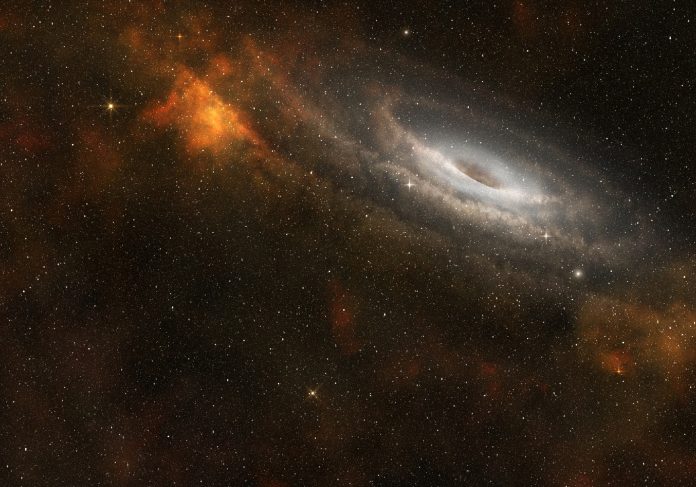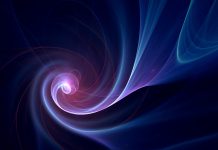Physicists from Goethe University Frankfurt and the Tsung-Dao Lee Institute in Shanghai have taken a new approach to one of the most profound mysteries in science: whether all black holes conform to Einstein’s theory of general relativity or if alternative forms could exist
Their study, published in Nature Astronomy, introduces a new method for comparing black hole “shadows” to predictions from different theories of gravity.
Black holes are regions of space where gravity is so strong that not even light can escape. When the Event Horizon Telescope (EHT) released the first images of black holes, the world saw bright rings of superheated gas swirling around an inescapable void. These iconic images supported Einstein’s theory, yet they also left room for deeper exploration.
Beyond Einstein’s theory
General relativity has stood for more than a century as the foundation for understanding gravity and spacetime. It predicts black holes as inevitable outcomes of massive stars collapsing under their own gravity. However, physicists have long wondered if other, less conventional theories might describe gravity differently while still allowing for objects that resemble black holes.
Some alternative models suggest that black holes could lack a true event horizon or even act as wormholes, hypothetical tunnels through spacetime. Others indicate the presence of exotic forms of matter that could alter the way black holes interact with their surroundings. Testing these ideas requires precise observations, which, until recently, were beyond our reach.
Simulating shadows across theories
To facilitate these comparisons, the research team conducted sophisticated three-dimensional computer simulations of how matter and magnetic fields interact near black holes.
From these models, they generated synthetic images showing how the plasma glows as it orbits near the event horizon. By comparing these simulated shadows across different gravitational theories, the scientists could identify how subtle physical differences would appear in actual telescope images.
The study revealed that black holes predicted by alternative theories would produce slightly different shadow shapes or brightness distributions. Yet these distinctions are currently too small to detect with the EHT’s existing resolution. The team’s analysis indicates that as telescope resolution improves, these differences are expected to become more pronounced.
A sharper cosmic eye
The researchers also developed a “universal characterisation” of black holes that can describe objects predicted by many different theories of gravity. This common framework could become a valuable tool for testing fundamental physics using astronomical observations.
Future improvements to the EHT network will significantly improve image clarity. With these upgrades, scientists expect to achieve resolutions finer than one millionth of an arcsecond, sharp enough to spot a coin on the Moon from Earth.
If future images reveal even slight deviations from Einstein’s predictions, it could revolutionise our understanding of gravity, matter, and the structure of the universe.




![Discovering the dark universe and a stellar nursery: Euclid searches through Orion constellation Image description: The focus of the image is a portion of LDN 1641, an interstellar nebula in the constellation of Orion. In this view, a deep-black background is sprinkled with a multitude of dots (stars) of different sizes and shades of bright white. Across the sea of stars, a web of fuzzy tendrils and ribbons in varying shades of orange and brown rises from the bottom of the image towards the top-right like thin coils of smoke.] CREDIT ESA/Euclid/Euclid Consortium/NASA, image processing by M. Schirmer (MPIA, Heidelberg)](https://www.openaccessgovernment.org/wp-content/uploads/2025/11/Euclid_peers_through_a_dark_cloud_s_dusty_veil-218x150.jpg)






